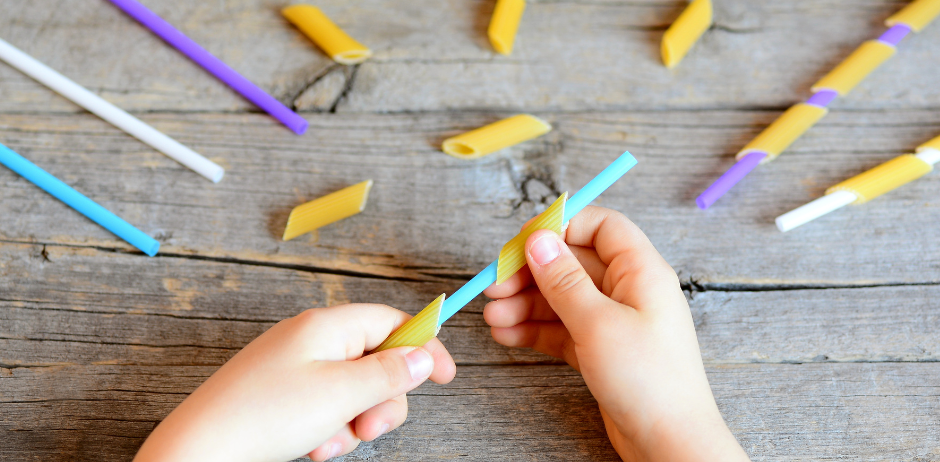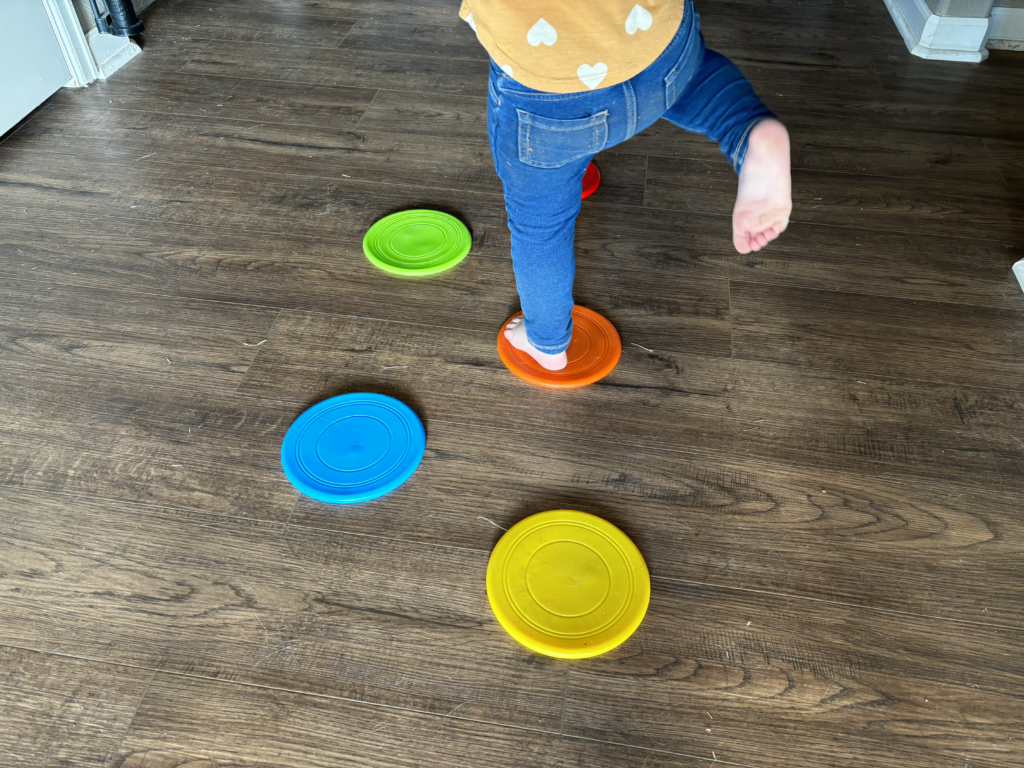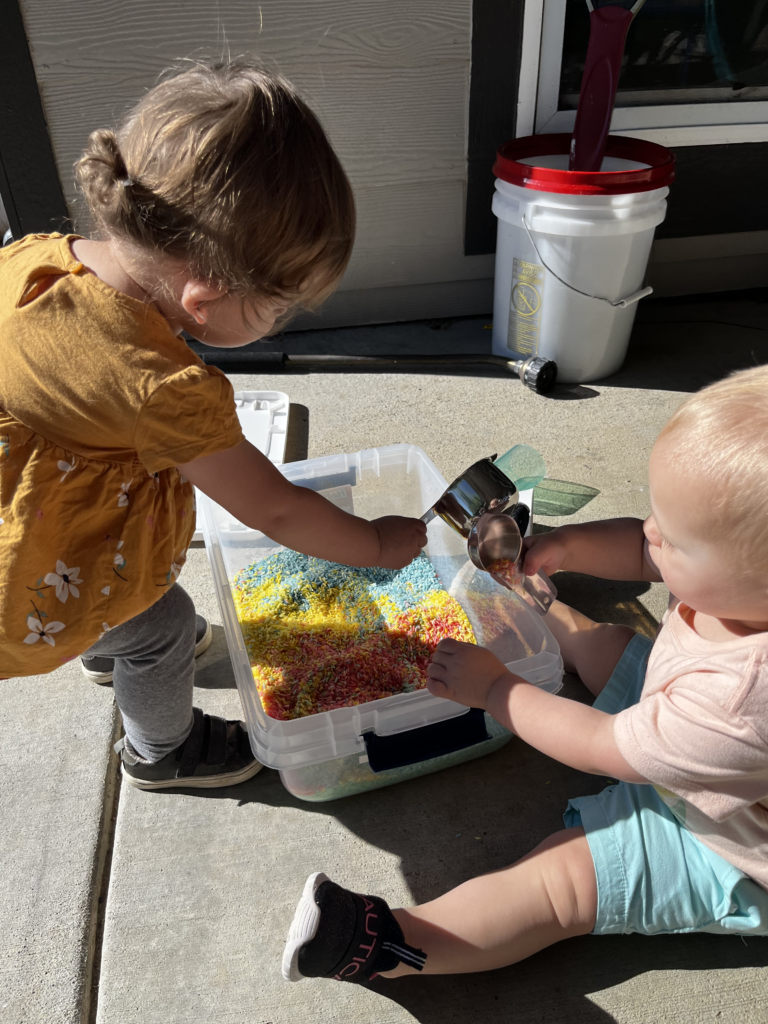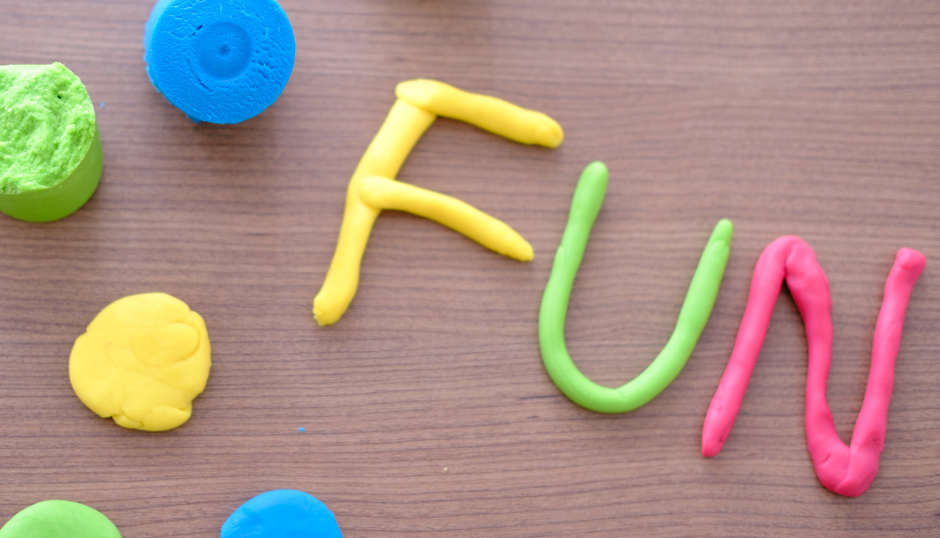Watching your toddler develop new skills is one of the most rewarding parts of parenting. While these skills often develop naturally, it is also important to think intentionally about how to support their development. This past weekend, I watched as my toddler pulled stickers off a sheet and I realized she was naturally developing her fine motor skills. It made me think a lot about how small actions like this are crucial for fine motor skill development. As a result, I wanted to write a post that explores some engaging and practical ways to help your little one master these essential skills. These activities, of course, utilize materials you likely already have at home: stickers, tweezers, spray bottles, and scissors.
Disclaimer: This post contains affiliate links. When you click these links, I may get a small commission. It won’t cost you anything, but it helps me to run this site. I only promote products and services that I think are great. Having been an educator for over a decade and a parent myself, I use my experience to judge whether a product is worthy. So, you can be assured that I always have your best interests at heart.
Understanding Fine Motor Skills
To start, let’s make sure we have a strong understanding of what fine motor skills are and why they are important. I have learned that this is a term that often gets thrown around, but many people have a limited understanding of what it really means.
What Are Fine Motor Skills?
Fine motor skills involve the use of small muscles in the hands and fingers. These skills are vital for everyday tasks like eating, writing, and dressing. For toddlers, mastering these skills is a significant milestone that supports their independence and overall development.
Why Are They Important?
Developing fine motor skills helps children perform tasks more independently and prepares them for academic challenges. Strong fine motor skills enhance hand-eye coordination, boost cognitive abilities, and improve overall dexterity.
When Should Development of Fine Motor Skills Start?
It’s never too early to start working on fine motor skills. Toddlers are at a perfect age to begin exploring activities that strengthen these muscles. While every child develops at their own pace, providing opportunities for practice is key to their progress.
Stickers – A Simple Yet Powerful Tool for Fine Motor Skills



The Magic of Stickers
The first activity to develop fine motor skills is stickers. Stickers are a fantastic way to engage toddlers in fine motor skill activities as they require precise finger movements and coordination. Additionally, kids absolutely love stickers, making them an engaging activity.
Benefits of Using Stickers to Develop Fine Motor Skills
Using stickers helps improve your child’s pincer grasp, hand-eye coordination, and attention to detail. It’s a fun and low-cost activity that can keep them entertained while they learn.
Activities with Stickers
- Sticker Sheets: Give your toddler a sheet of stickers and encourage them to peel and stick them onto paper. This activity requires concentration and fine motor control. I found some raised stickers for my toddler to start with. Once she gets good with these, we will move on to more traditional flat stickers.
- Create a Scene: Provide a blank piece of paper and stickers of various objects. Ask your child to create a scene, such as a farm or a park, using the stickers, thus adding an element of creativity and storytelling.
- Sticker Sorting: Use different sticker shapes and colors. Have your toddler sort them into categories. This not only works on fine motor skills but also introduces basic sorting and categorization concepts.
Tweezers – Precision and Dexterity
Why Tweezers?
Tweezers are another excellent tool for developing fine motor skills. They require a different set of movements and a higher level of precision compared to stickers. You can have your toddler use your own personal tweezers, or get some great plastic and toddler friendly tweezers like these (this set also naturally leads to many of the activities listed below).
Benefits of Using Tweezers to Develop Fine Motor Skills
Using tweezers helps improve your child’s grip strength, coordination, and concentration. These activities also prepare them for tasks that require similar skills, like using scissors or holding a pencil.
Tweezers Activities
- Sorting Small Objects: Provide small items like beads or buttons and a pair of child-friendly tweezers and ask your toddler to pick up and sort these items into containers.
- Transfer Games: Set up two bowls—one filled with small objects and the other empty. Have your toddler transfer the objects from one bowl to the other using tweezers. This activity is great for practicing precision and control.
- Color Matching: Use colored pom-poms and bowls with matching colors. Encourage your child to pick up the pom-poms with the tweezers and place them in the corresponding color bowls. This also develops sorting skills, which is a precursor to many academic tasks in both math and literacy.

Spray Bottles – Fun with Water Play
How Spray Bottles Help
Spray bottles are fantastic for building hand strength and coordination. They also provide a fun way to incorporate water play into skill development. I use a spray bottle with water to spray my daughter’s hair each morning so I can style it. I use these travel spray bottles and love them because they also lock so she can’t use them whenever.
Benefits of Using Spray Bottles to Develop Fine Motor Skills
Spray bottle activities help improve your toddler’s grip strength, coordination, and ability to control hand movements. Additionally, they add an element of fun and excitement to learning.
Spray Bottle Activities
- Watering Plants: Give your toddler a spray bottle filled with water and allow them to help water the plants. This task is both fun and functional, teaching them about responsibility while strengthening their hands.
- Cleaning Windows: Show your child how to spray and wipe down windows. This activity turns a chore into a playful learning experience.
- Art Projects: Use diluted watercolor paints in spray bottles and have your toddler spray them onto paper to create beautiful, abstract art. This combines creativity with physical activity. If it’s winter time, you can also have them spray the snow. See my Snow Day post to see how I had my toddler paint the snow!


Cutting – Building Fine Motor Skills with Precision and Control
Importance of Cutting Skills
Cutting with scissors is a fundamental skill that requires practice and patience. It helps children develop hand strength, coordination, and the ability to follow lines and shapes. Just make sure you have some toddler friendly scissors for these activities. If you don’t have toddler scissors on hand, make sure you have small, child-safe scissors and that you closely monitor them.
Benefits of Cutting Activities to Develop Fine Motor Skills
Cutting helps develop fine motor control, hand-eye coordination, and the ability to focus on a task. It is also an essential skill for future academic tasks like writing and drawing. The strength a child develops in their hands doing activities like this will be important for when they start to write.
Cutting Activities
- Simple Snips: Start off with a pair of child-safe scissors and strips of paper and encourage your toddler to make small snips along the edge of the paper. This will also help them get used to holding the scissors as it is a hard skill for kids to master.
- Cutting Lines: Once your kid is comfortable with holding scissors, you can move on to cutting along lines. Draw straight or curved lines on paper and have your child practice cutting along them. This helps improve their ability to control the scissors.
- Craft Projects: Incorporate cutting into craft projects. Provide paper shapes for your child to cut out and use in creating collages or greeting cards.


Incorporating Fine Motor Skills into Daily Routine
Everyday Opportunities
While I have provided some easy and fun activities for fine motor skills here, there are so many other things you can do as part of your routine. Simple tasks like buttoning clothes, zipping jackets, and using utensils during meals are all excellent ways to build these skills.
Encouraging Independence
Encourage your toddler to try tasks on their own, even if they’re challenging. For example, my toddler really struggled with the sticker activity listed above. Even though I really wanted to jump in and help her, I didn’t. As a result, she eventually figured out how to pull the stickers off herself and really enjoyed doing so. Offering gentle guidance and praise instead of jumping in to help them will build their confidence and independence.
Making it Fun
Keep the activities fun and light-hearted and avoid only praising when things are done perfectly. Use positive reinforcement and celebrate their successes to keep them motivated and excited about practicing their skills.
Conclusion – Nurturing Your Toddler’s Growth
By incorporating these activities into your toddler’s routine, you’ll be helping them develop essential fine motor skills in a fun and engaging way. Remember, every child progresses at their own pace, so be patient and supportive. Most importantly, have fun! If you are having fun, your toddler will have fun.

This blog came out of the work I did with my husband to start our business Kids’ Night In. At Kids’ Night In, we provide parents with a childcare option when others are closed, including after hours, weekends, and school breaks. Check us out if you live in the Aurora, Colorado area!
Did you find this useful?
Check out more of my ideas and resources!




